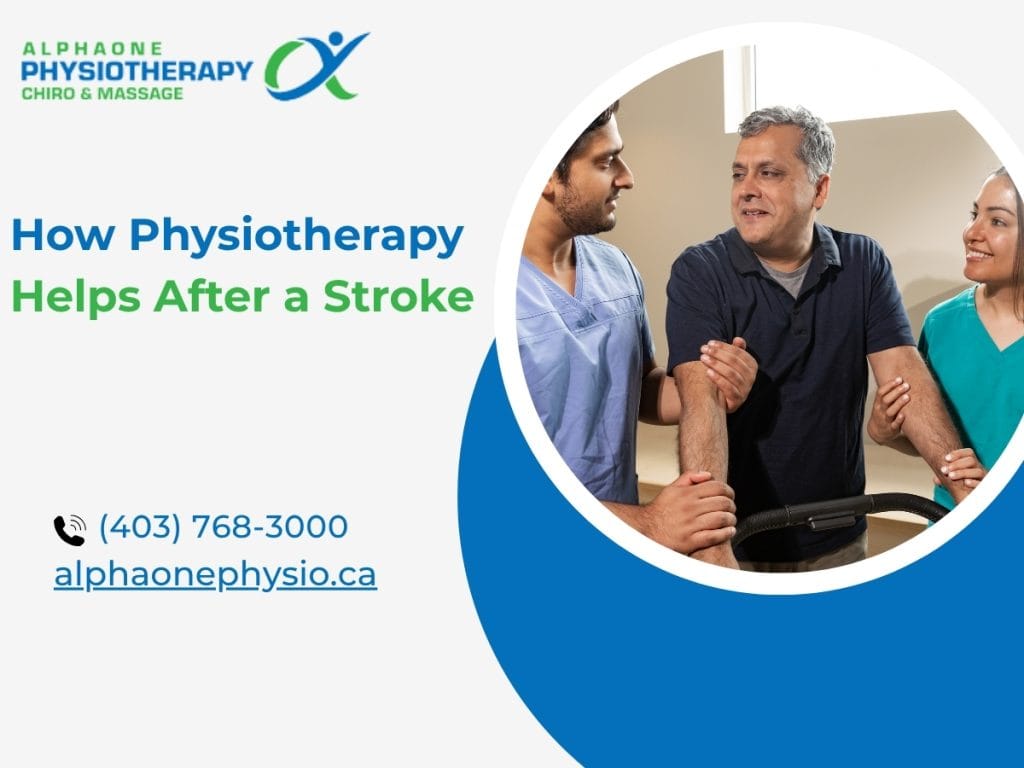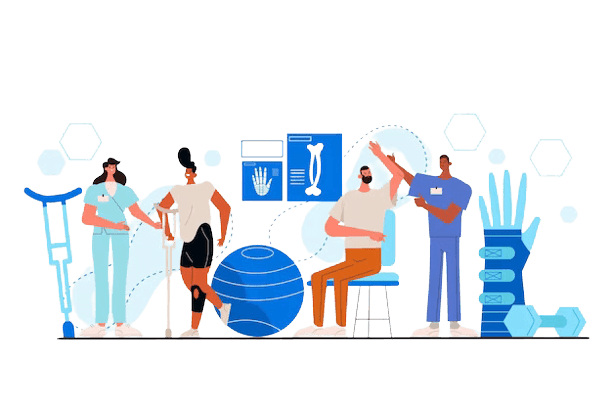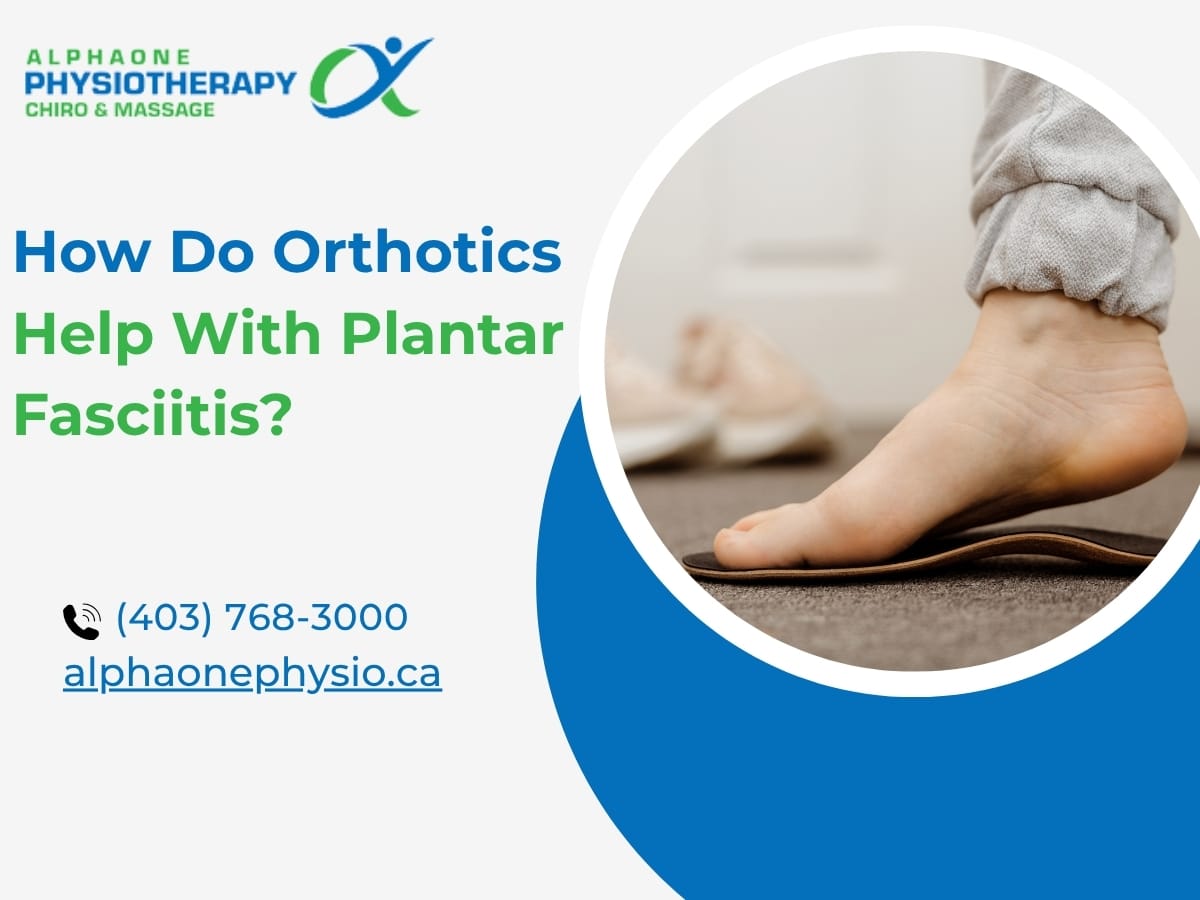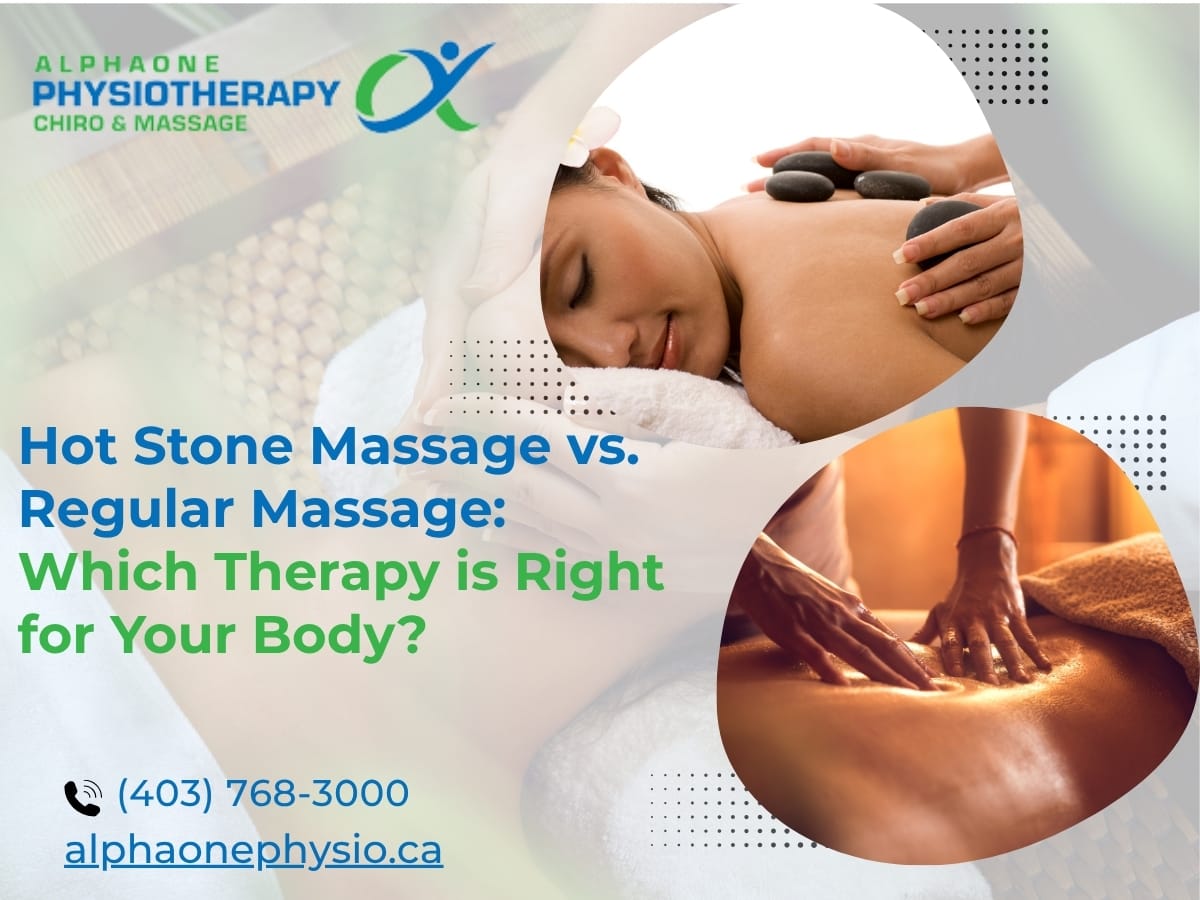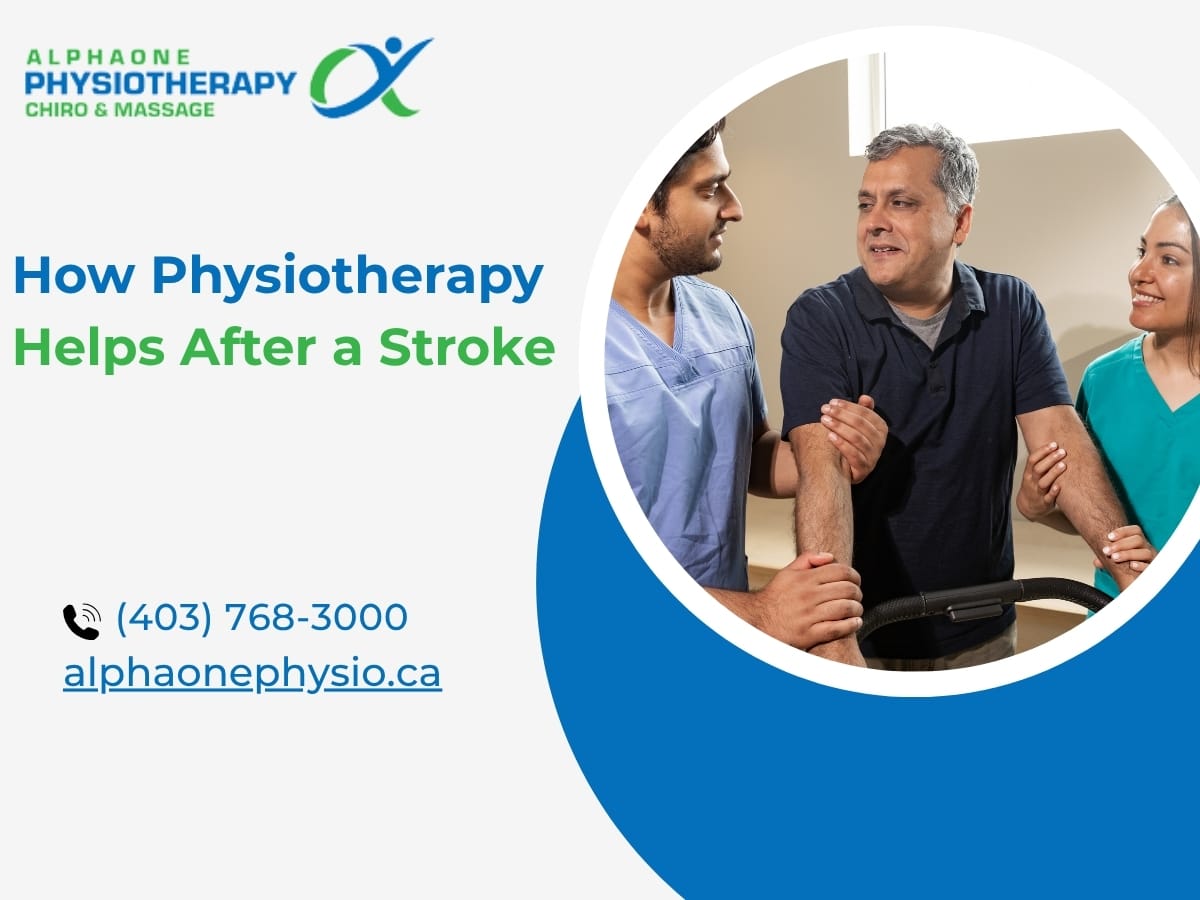A stroke can change a person’s life in just a few minutes. It happens when blood flow to part of the brain is blocked or reduced, which prevents brain tissue from getting oxygen. When this happens, brain cells start to die, and the body may lose control over movement, balance, or speech.
Recovery after a stroke is not easy, but it is possible. With the right care, patients can slowly regain their independence. Physiotherapy after stroke plays a very important role in this journey. It helps the body learn to move again, rebuild strength, and restore lost abilities. This type of treatment is not only about exercise, it’s about hope, confidence, and healing.
What Happens After a Stroke: Typical Deficits
Stroke rehabilitation physiotherapy helps the brain and body reconnect. The human brain has an amazing ability called neuroplasticity, this means it can form new connections to take over the work of the damaged areas. Physiotherapists use specific exercises and movements to activate these new pathways.
For example, when a patient practices moving a weak arm or leg repeatedly, the brain slowly learns to control those muscles again. Over time, movements become smoother and more natural.
In Canada, about 62,000 people suffer a stroke every year, and many of them need some form of rehabilitation to return to daily life. The challenges vary for each person, but almost everyone benefits from early and consistent physiotherapy.
When to Begin Physiotherapy Post-Stroke
Many people wonder when it’s safe to start physiotherapy for stroke. The answer depends on the patient’s health and doctor’s approval, but in many cases, therapy can begin within the first 24 to 48 hours after the stroke.
In the early days, the focus is gentle. Therapists may help the patient change positions in bed, stretch their arms and legs, or sit upright. These small movements are very important, they help prevent stiffness and prepare the body for bigger movements later.
As the patient grows stronger, physical therapy after stroke progresses to standing, balance training, and walking with support. Early and consistent therapy gives the best chance for recovery because it trains the brain while it is still healing.
Core Physiotherapy Interventions
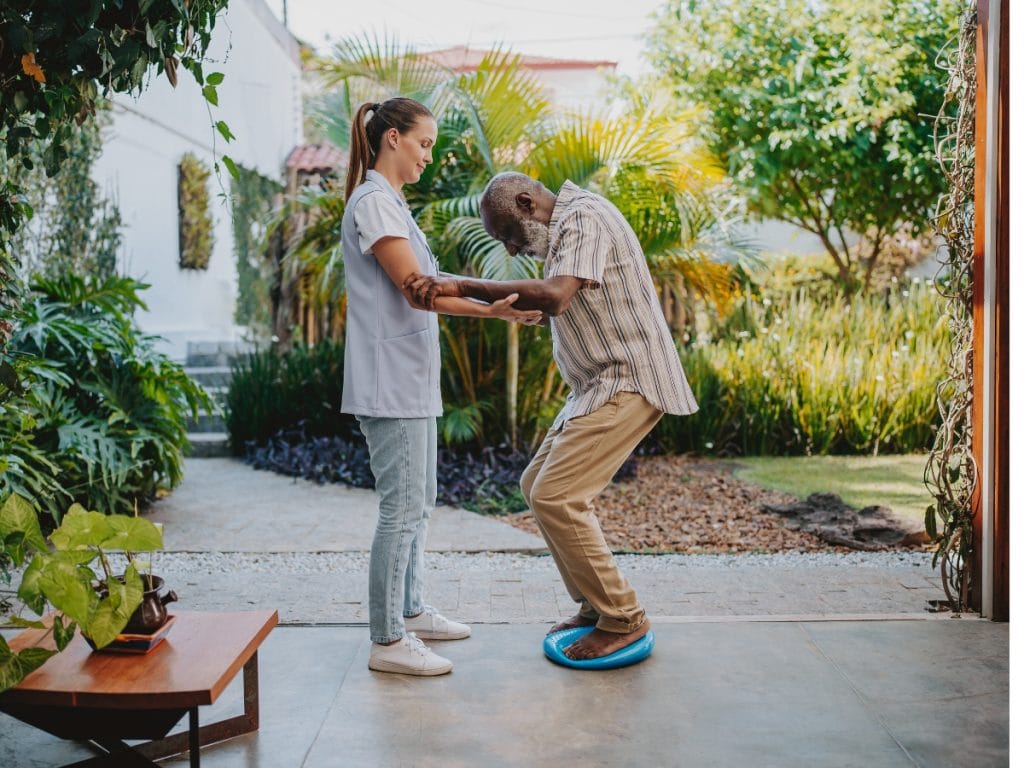
Stroke physio sessions are carefully planned and include different techniques, such as:
- Range of motion exercises: To keep joints flexible and prevent stiffness.
- Strength training: To rebuild weak muscles, often using light weights or resistance bands.
Balance and coordination exercises: To help patients walk safely and avoid falls. - Task-based therapy: Simple activities like holding a cup, brushing hair, or reaching for objects help the brain learn daily movements again.
- Gait training: Relearning how to walk using parallel bars, walkers, or support harnesses.
Therapists also teach safe movement methods, such as getting out of bed or transferring from a wheelchair, to make daily life easier and reduce the risk of injury.
Adjunct Modalities & Approaches
In modern rehabilitation clinics, stroke supportive therapy often includes advanced tools and technologies that make recovery faster and smoother. Some helpful methods include:
- Electrical muscle stimulation – to activate weak or paralyzed muscles.
- Shockwave therapy – to reduce stiffness and pain in tight muscles.
- Ultrasound therapy – to improve blood flow and reduce inflammation.
- Hydrotherapy or aquatic therapy – gentle exercises done in warm water to reduce stress on joints.
- Balance boards and resistance bands – to improve stability and strength gradually.
These methods are always used under the guidance of a trained therapist. They are safe, effective, and can speed up the healing process.
Expected Outcomes & Timeline
Recovery after a stroke takes time and patience. The first three to six months are often the most important for regaining movement. Many people continue improving for up to a year or longer.
With regular physiotherapy, patients can expect better movement, improved balance, reduced stiffness, and more independence in daily life. Research shows that up to 80% of stroke survivors experience some movement problems, but with the right therapy, many recover enough to live active, meaningful lives again.
Limitations & When Physio Alone May Not Suffice
While physical therapy for stroke patients is extremely important, sometimes it is not enough by itself. Some patients may also need speech therapy for communication problems, occupational therapy for hand functions, or psychological counseling for emotional support.
In cases of severe brain injury, recovery may be slower, and some movements may not fully return. However, combining physiotherapy with other treatments gives the best results and helps patients adjust to new ways of living independently.
Self-Care & Home Strategies
Healing continues even outside the clinic. Here are some home strategies that can help:
- Practice home exercises given by the therapist every day.
- Maintain good posture while sitting, standing, and walking.
- Use walking aids or support handles if needed.
- Stay active with light daily movements instead of staying in bed for too long.
- Eat healthy food rich in protein and vitamins.
- Get enough rest and good sleep to support brain recovery.
Family support is also very important. Encouragement, patience, and positivity from loved ones can make a huge difference in recovery.
Choosing a Good Stroke Rehab Physiotherapy Program
Finding the right stroke rehabilitation physiotherapy program can make all the difference. A good program should have:
- Qualified and experienced physiotherapists
- Advanced machines and supportive tools
- A clean, comfortable, and safe environment
- Personalized recovery plans for each patient
- Education for family members and caregivers
- Long-term support and motivation
Choosing the right clinic means choosing hope, recovery, and a better quality of life.
Conclusion
Recovery after a stroke is a journey of courage and determination. With regular stroke physiotherapy, patients can regain strength, balance, and independence step by step. It may take time, but progress is always possible with the right support.
At AlphaOne Physio, we provide compassionate and personalized stroke physiotherapy using advanced tools and expert care. Our goal is to help every patient rebuild confidence, move freely, and return to daily life with dignity and hope.
If you or a loved one has suffered a stroke, don’t wait, reach out today and take the first step toward recovery.
FAQS
Physiotherapy should begin as early as possible, usually within 24–48 hours after the stroke, once approved by a doctor. Early movement helps prevent stiffness and improves recovery speed.
Yes, even if the stroke happened months or years ago, physiotherapy for stroke patients can still improve movement, strength, and balance through consistent exercises and supportive therapy sessions.
Recovery time varies for every person. Most patients need at least three to six months of regular stroke rehabilitation physiotherapy to see noticeable improvements in mobility and daily function.
No, stroke physiotherapy should not be painful. Exercises are gentle, safe, and guided by trained therapists. Some mild soreness may occur, but pain is carefully avoided during sessions.
Yes, therapists often teach safe home-based exercises. Regular stretching, balance training, and light movement help maintain progress and support long-term recovery between therapy sessions.

